
views
Baiting a Rabbit in a Live Trap

Purchase a live trap. Using a live trap is the most humane way of catching a wild rabbit, as they do not injure the animal. Live traps come with a trap door, a trap mechanism, and several pulleys. They can be found online or at your local sporting goods store for 20 to 50 dollars. Choose a live trap with one trap door if you plan to set it against a wall or tree. Purchase a live trap with two trap doors if you plan to place the trap on a trail.
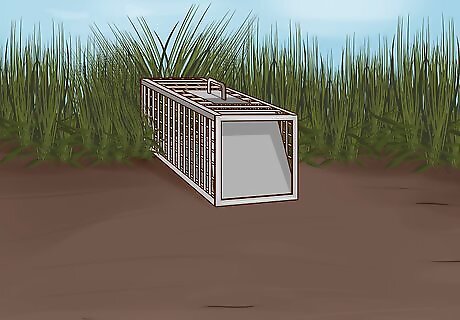
Set the trap on a rabbit trail. Rabbits usually travel along the same paths and trails, so it is important to observe an area for rabbits before setting a trap. The most common type of rabbit trail is found in areas that allow them to hide and escape easily, such as high brush or paths along fences that have overgrown. Spend time observing the rabbit trail and place the trap in the center of the rabbit's most common path. If you are using a double-sided live trap, place the trap in the center of the trail so that the rabbit can enter from both sides. If you are using a single door live trap, place the trap against a large pile of brush or against a tree that is surrounded by obstacles so that the rabbit cannot go around the trap. Look for rabbit scat along trials and in areas where you have seen rabbits before.
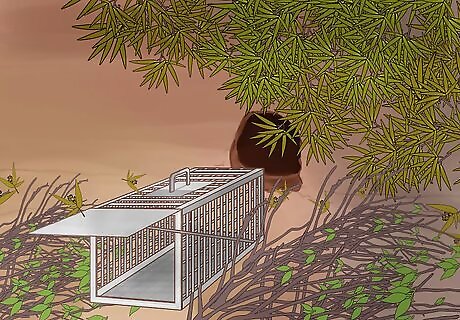
Manipulate the trail to narrow the rabbit's path into the trap. Using materials that are found on the rabbit's trail, such as branches, long sticks, or brush, narrow the rabbit's path into the trail. This method will increase of your chances of catching a rabbit and will ensure that the rabbit does not go around your trap once it is set. If the rabbit's trail leads to a rabbit shelter, place the trap in the entrance of the shelter.
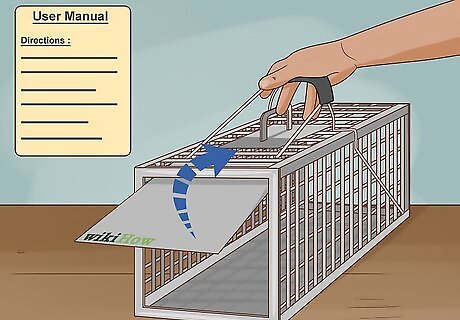
Pick up the door and lock it into place, setting the trap. Follow the directions that come with the live trap in order to set it properly, as each trap will work in its own way. Make sure that the trap activates by probing the trap mechanism with a long stick. Once you test the trap, reset the door and place the trap outside. If the trap doesn't activate, be sure to reread the directions and set the trap again. If you suspect that your trap is defective, contact the business you purchased it from and ask for help. They may be able to help you over the phone or ask you to return the trap.

Choose an effective trapping bait. The most effective forms of bait for catching rabbits are vegetables, specifically apples, brussel sprouts, carrots, or lettuce during the warmer months, and bread, corn, alfalfa, and clover during the winter months. Rabbits are herbivores, so any leafy or root vegetable you choose should be effective. Although the bait does not have to be fresh, it should not be rotting or too old for the rabbit to eat the vegetable. You can also spray apple cider vinegar into the trap as a supplement to the bait you've already placed, or by itself as the primary bait. Catching a wild rabbit is easier in the winter months because there is less food and the rabbit's will be lured in by bait more easily.

Place the bait in the trapping mechanism. Be careful to place the food directly on the trap mechanism, and not in the back of the live trap. If the bait is placed improperly, there is a chance your rabbit could escape the trap with a full belly, and you'll have nothing to show for your efforts. Do not place the bait anywhere other than the trapping mechanism for the most effective results. If you are using a two door live trap, the trapping mechanism will be in the center of the live trap. The weight of the rabbit is what trips the trapping mechanism, allowing the door to fall.
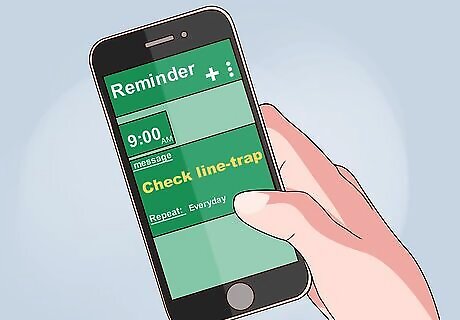
Check the trap as often as possible. In order to preserve the rabbit's health and keep the live trapping humane, the rabbit should be released or relocated as soon as possible. Set reminders for yourself to check the trap every 24 hours to ensure the rabbit is not stuck in the trap for too long.
Releasing the Rabbit
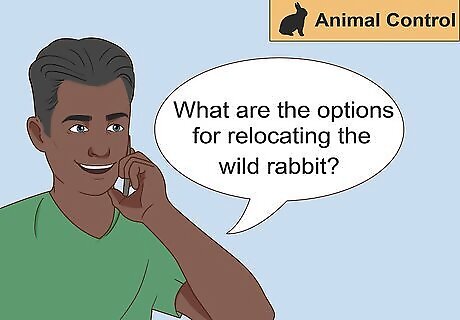
Call animal control and ask about relocation laws. It is illegal to relocate problem wildlife in certain regions, so it is important to understand your local laws before relocating the rabbit. Animal control will give you the best options for relocating your caught wild rabbit and may pick the animal up for you. Some areas, like the state of Washington, require a permit in order to move or relocate wildlife, including cottontail rabbits.
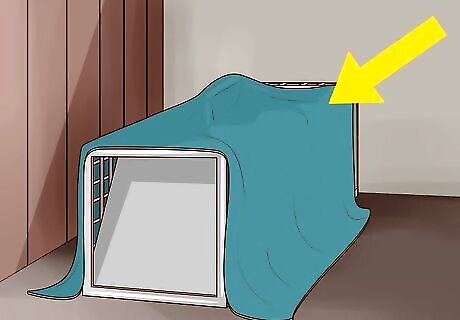
Place the rabbit in a quiet area and lay a tarp over the trap. You should not keep the rabbit in the trap for longer than you have to, but keeping it in a quiet space will keep it calm before you relocate. Place a thick blanket or tarp over the trap to keep the rabbit calm and do not move the trap more than necessary. If you are able to move the rabbit right away, it is still important to place something over the tarp during transportation. The chances of the rabbit's survival decrease when they are exposed to trauma or stress, so treat the rabbit as if it were your pet.

Release the rabbit 10 miles (16 km) away from where you caught it. When transporting the rabbit, take care not to injure or traumatize the rabbit. Relocate the rabbit by placing the trap in a safe place within your vehicle so that it does not fall over or slide around too much. Find an area that is similar in landscape to the place you caught the rabbit. The relocation point should be far from any roads or other people's homes, as the rabbit will often start heading back in the direction of its capture.
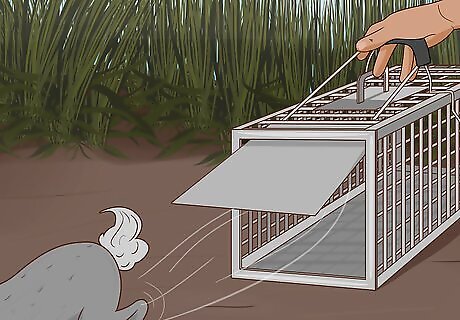
Stand behind the trap and open the door from behind. Face the open trap toward a place where the rabbit can hide and be cautious to not injure the rabbit while opening the trap. Lightly shake the trap to encourage the rabbit to leave, and if it is reluctant, flip the trap on its side and walk away to give the rabbit some time.
Deterring Rabbits from Your Yard
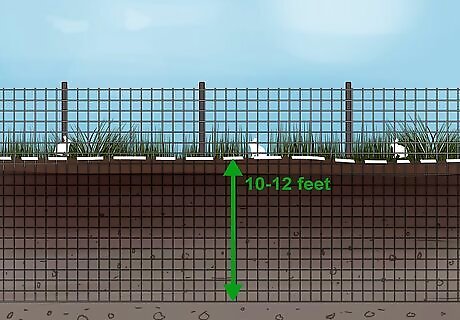
Install fencing to keep the rabbits out. A humane and effective way of keeping rabbits out of your yard or garden is by setting up fences around the problem areas. Dig 10 to 12 feet (3.0 to 3.7 m) underground where you want to install a wire fence. Lay chicken wire in the hole and create a fence that is tall enough to keep the rabbits from jumping over it. Hire a professional to install the fence for you if you do not have the resources or experience to install a fence on your own. Chicken wire will keep the rabbits from digging or burrowing under the fence.

Use repellents to keep the rabbits away. This option is expensive and temporary, but it can be effective if you are consistent. Buy a rabbit repellent from your local sporting goods store and spray it on your plants or in your yard. The repellent will have to be reapplied, as the smell will fade and the rabbits will return after some time. The most effective repellents smell like fox-urine, or like the urine of other predators.

Spray fungicides that contain the chemical Thiram. These fungicides are extremely toxic and should not be applied to plants you plan to eat or any areas where children may be playing. Fungicides are extremely effective in deterring rabbits, and are a good option for areas with ornamental plants or parts of your garden that will not be eaten by humans.



















Comments
0 comment